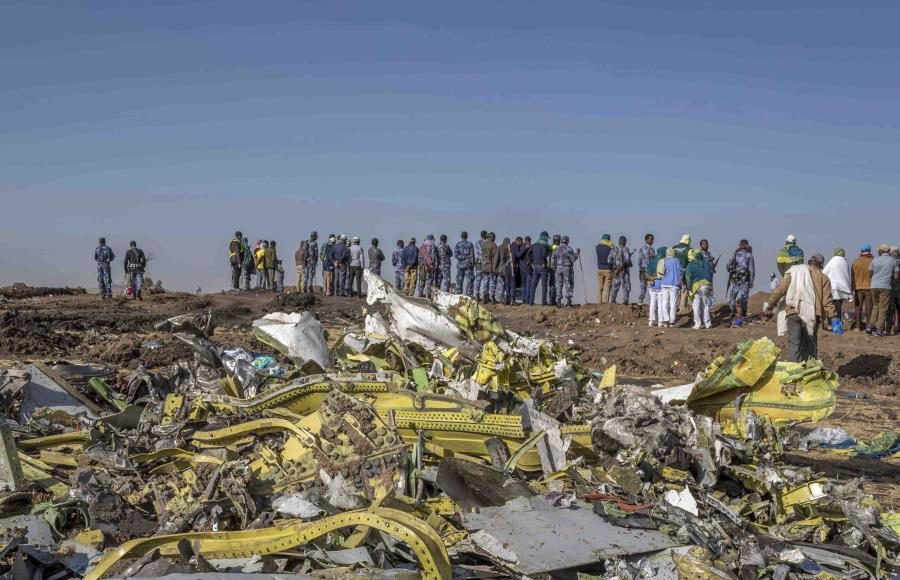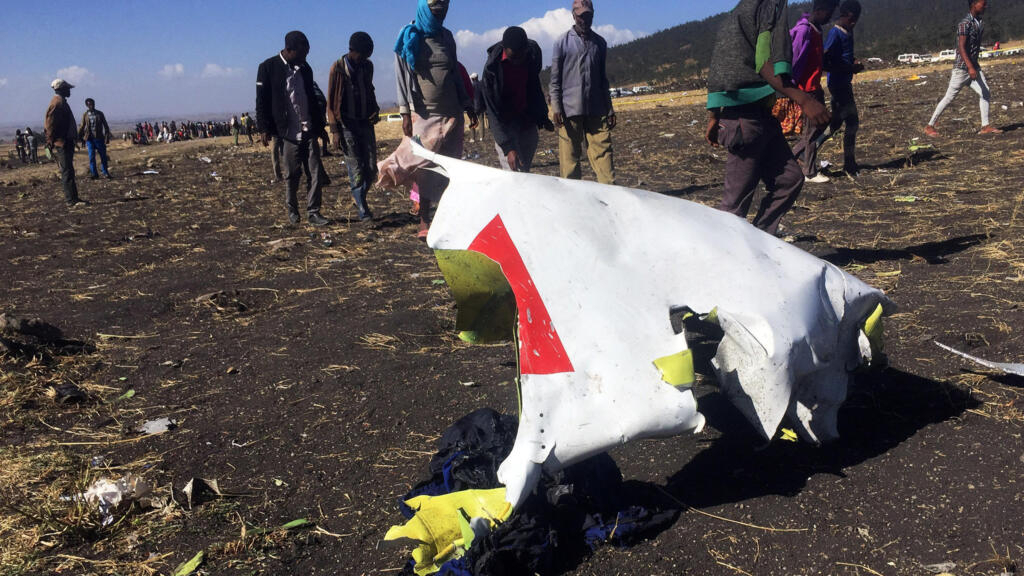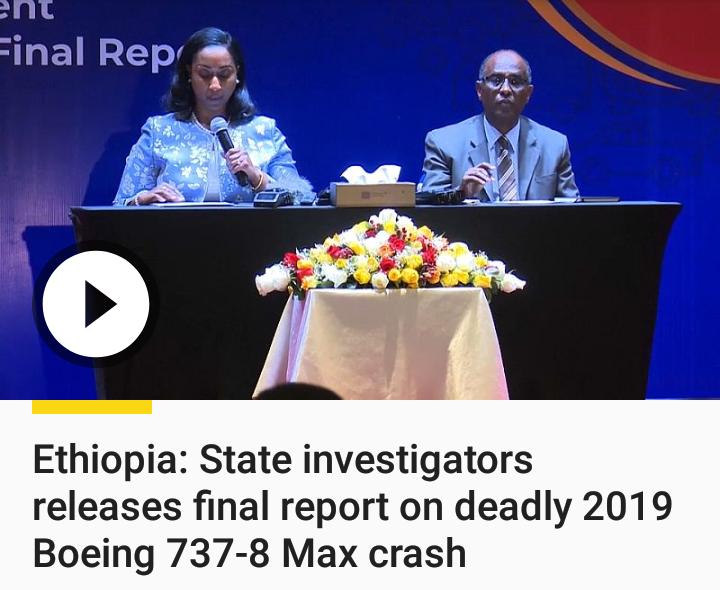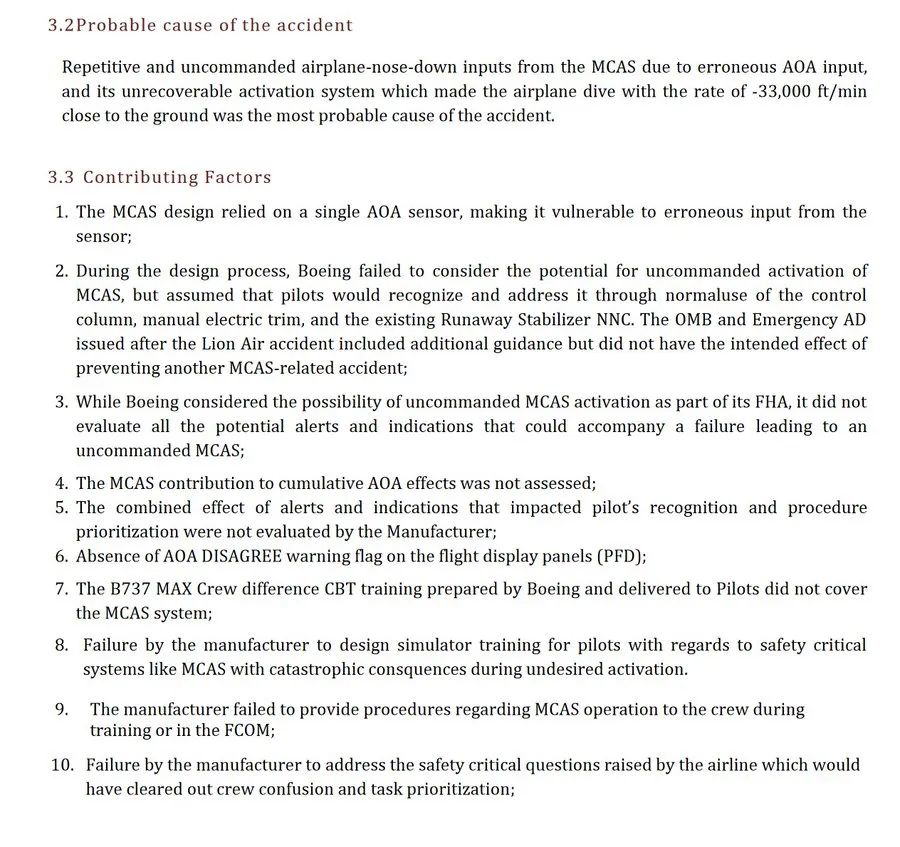


French Bureau of Enquiry and Analysis for Civil Aviation Safety (BEA) is critical of the Final Report of Ethiopian Aircraft Accident Investigation Bureau (EAIB) on the March 10, 2019, Ethiopian Airlines flight 302, Boeing 737-8(MAX) aircraft , ET-AVJ crash, which forced the grounding of the Max Variant globally.
In a press release dated 03 Jan 23 , it said ,
On December 23, 2022, the EAIB published the final report on its website without directly including the BEA's comments in appendix. Instead, the EAIB report contains a link to a BEA document which does not contain the comments that the BEA had finally requested to be appended.
In the press release , BEA mentioned that the Ethiopian authorities had requested their assistance for the analysis of the FDR and CVR which were damaged. Following that request, the BEA appointed an accredited representative investigator to participate in the investigation conducted by Ethiopia as State of Occurrence.

Here BEA mentioned the provisions of Annex 13 to the Convention on International Civil Aviation (Annex 13 of the ICAO), which obligates the State conducting the investigation to send a copy of the draft final report to the participating States (in this case to the accredited representative of the BEA for France and to that of the NTSB for the United States).
BEA further added that ,
these States are then invited to provide as soon as possible their significant and substantiated comments on the report. If the State conducting the investigation receives comments within 60 days, it shall either amend the draft final report to include the substance of the observations received or, in the event of disagreement on them, and if desired by the State that provided the comments, append the comments to the final report.
BEA press release has come to the forefront after the U.S.A. NTSB objected to the EAIB final report followed by the publication of the comments on its website after the Ethiopian agency failed to include the NTSB’s comments in its final report on its investigation into the March 10, 2019, crash of Ethiopian Airlines flight 302.

As per BEA , following disagreements on the amendments to the final report , it had asked EAIB to add the comments to the final report along with NTSB,
From January 2021, the NTSB and the BEA were consulted on a draft of the final report. The NTSB and the BEA requested in particular that the aspects related to the performance of the crew be better exposed and analysed. These exchanges did not result in satisfying amendments to the final report and led the NTSB and the BEA to request that their comments be appended to the final report.
On December 23, 2022, the EAIB published the final report on its website without directly including the BEA's comments in appendix. Instead, the EAIB report contains a link to a BEA document which does not contain the comments that the BEA had finally requested to be appended.
To Learn more on BEA Comments, Click here .
On the other hand, NTSB believed , EAIB’s investigation lacked developments on the issues those include flight crew performance, crew resource management (CRM), task management, and human-machine interface.
NTSB said ,
Overall, the US team concurs with the EAIB’s investigation of the MCAS and related systems and the roles that they played in the accident. However, many operational and human performance issues present in this accident were not fully developed as part of the EAIB investigation. These issues include flight crew performance, crew resource management (CRM), task management, and human-machine interface. It is important for the EAIB’s final report to provide a thorough discussion of these relevant issues so that all possible safety lessons can be learned.
BEA also speaks on the similar concerns , the analysis of the crew's performance and its contribution to the accident scenario beyond the involvement of MCAS,
"The BEA shares the analysis and conclusions of the EAIB report regarding the contribution of the MCAS system of the 737 Max to the accident. BEA's comments are mainly related to the analysis of the crew's performance and its contribution to the accident scenario, in particular during the first part of the flight (between the rupture of the angle of attack vane and the activation of the MCAS system)."
"The BEA considers that this analysis would make it possible to draw safety lessons beyond those related to the MCAS system."

Ethiopian Aircraft Accident Investigation Bureau (EAIB) Analysis of the Contributory Factors.
The BEA notes that the contributing factors identified by the EAIB are only related to the MCAS system. The following contributing factors, that come out of the analysis of the event, should also be stated in the report:
Flight crew’s failure to apply, immediately after take-off and before the first MCAS activation, the Approach to Stall or Stall Recovery Maneuver and the Airspeed Unreliable Non-Normal Check-list;
Captain’s insistence on engaging the A/P, contrary to the Approach to Stall or Stall Recovery maneuver procedure;
Insufficient use of the electric trim to relieve the high control column forces after the MCAS nose down orders;
Captain’s lack of thrust reduction when the speed became excessive, which in combination with insufficient trim, caused an increase of the forces which became unmanageable on both the control column and the manual trim wheel.
The use of the Logipad system by the airline as the sole means to disseminate information on new systems and/or procedures, which doesn’t allow the evaluation the crews’ understanding and knowledge acquisition on new systems and procedures. This system was used to disseminate the information related to the MCAS system issued following the previous 737 Max accident and did not allow the airline to ensure that the crews had read and correctly understood this information.
You may like to read...
